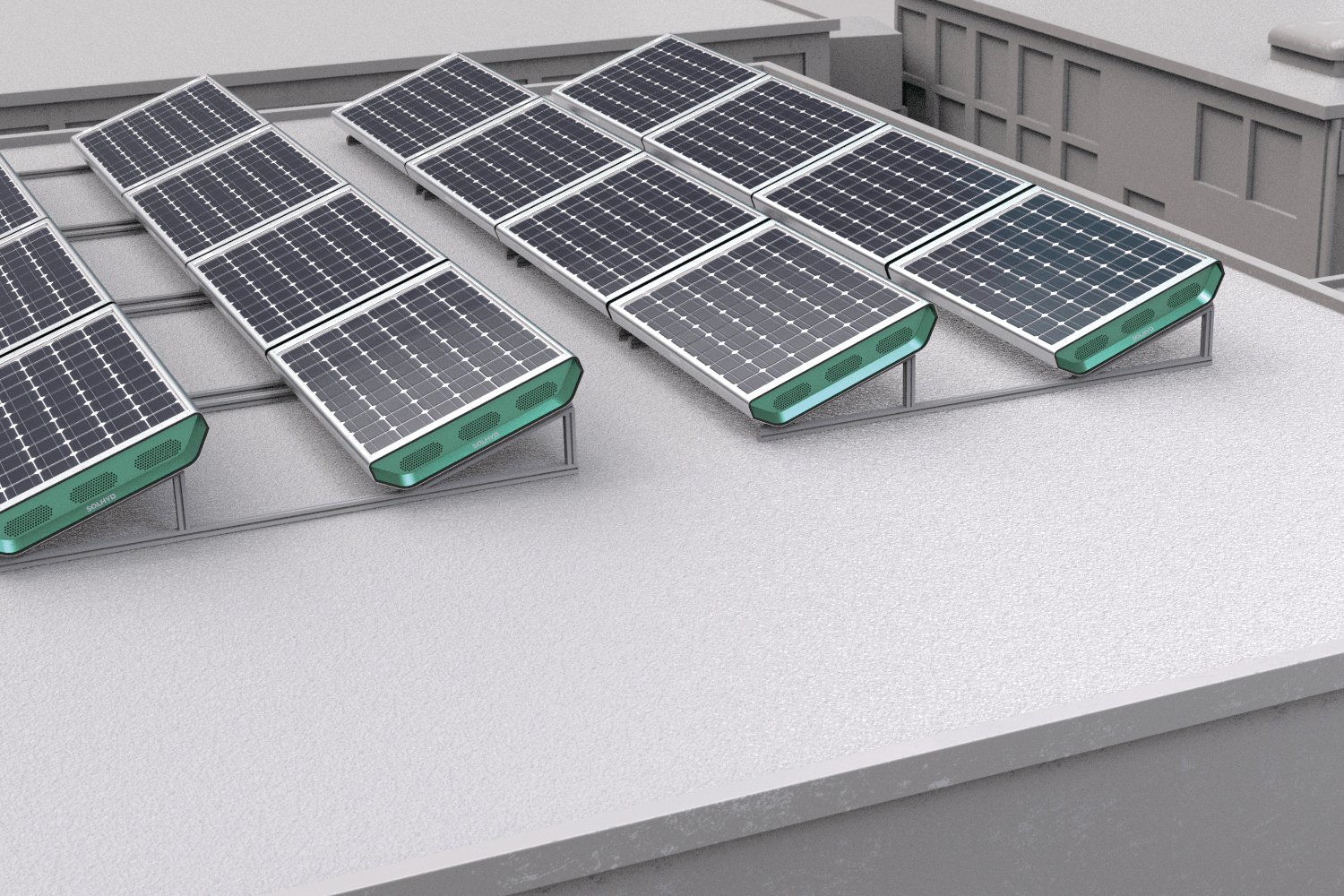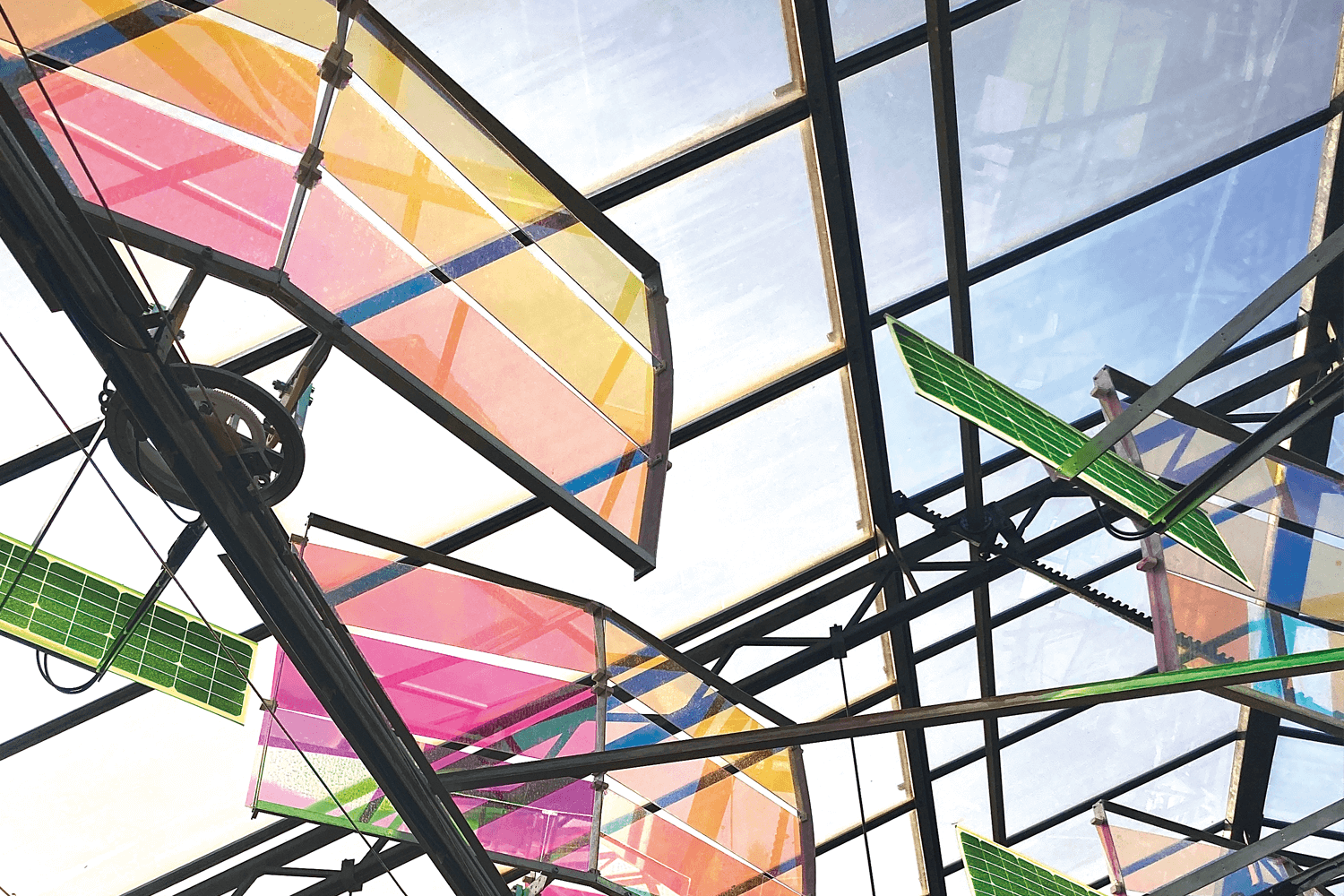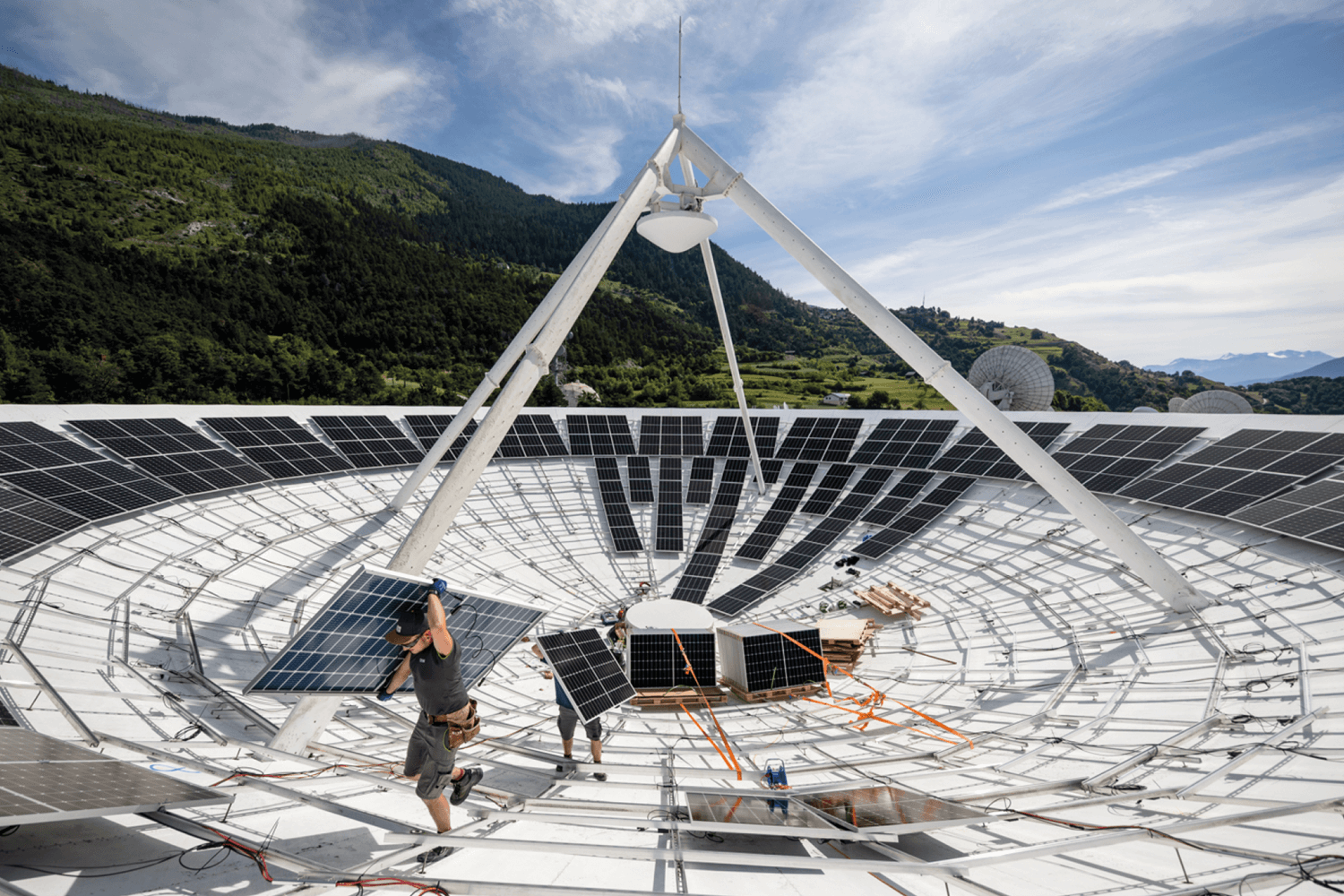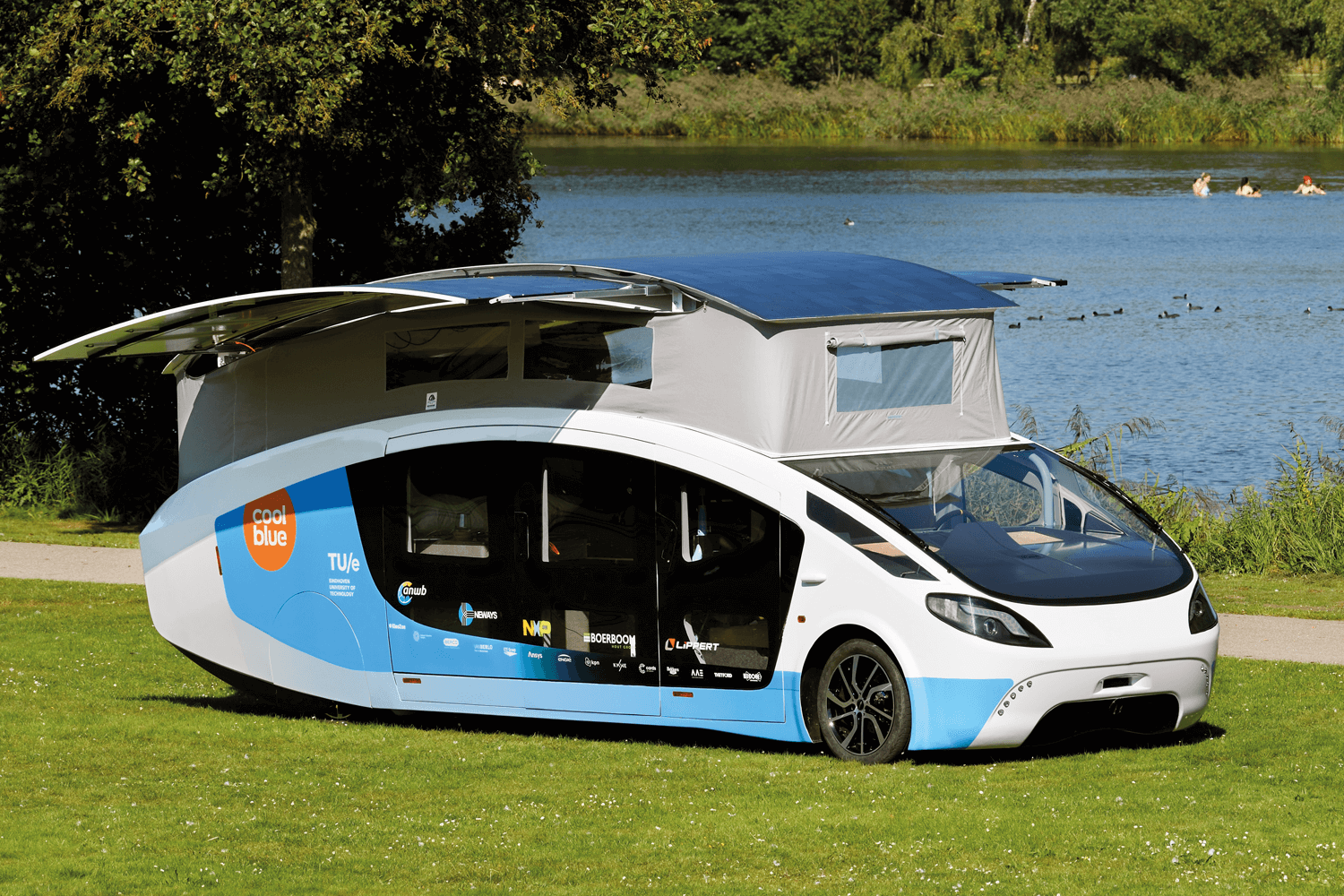#statusMessage#
Do you want to start the compare now?

For a long time, electricity was considered to be a constantly available and comparatively inexpensive commodity. However, increasing awareness of climate change and the energy crisis that began in 2022 have led companies and private households to increasingly ask themselves the question: can we afford to continue as we are? Or do we need to take a fresh look at how we can meet our energy needs in a sustainable, economical and socially acceptable way?
One possible contribution to improvement: photovoltaic systems that produce green electricity and impress with their decentralized concept, independence from many external factors and ideal scalability. dataTec SPEKTRUM presents some impressive projects from the innovative solar industry.

liters of hydrogen per day
Researchers at the KU Leuven in Belgium have achieved an impressive success: Together with the engineering firm Comate, they developed solar modules which, in addition to their traditional function, can also capture water from the air and produce hydrogen from it. The technology behind it: The modules use solar energy to split water molecules and produce hydrogen gas. The hydrogen is then stored under pressure using a compressor and can be discharged via pipes integrated into the design of the photovoltaic system. The hydrogen can be used to generate both electricity and heat by means of combined heat and power generation.
According to the researchers, the Solhyd project can currently produce up to 250 liters of hydrogen per day. Around 20 modules are needed to reliably supply a detached house, including a heat pump, with electricity and heat in winter. Work is currently underway to make the innovation ready for series production – according to the developers, the product should be commercially available as early as 2026
Source text: Solhyd Project | Image: Comate | https://www.comate.be/en/cases/hydrogen-panels

less CO2 emissions
Until now, greenhouses that wanted to use photovoltaics faced a dilemma: sealing the glazing with solar panels reduced the amount of sunlight, which in turn reduced the yield. The Swiss start-up Voltiris meets this challenge with an impressive design. impressive design.
Plants require red and blue light, i.e. a certain part of the light spectrum, for photosynthesis. Using colour-optimised photovoltaic modules, which use so-called dichroic mirrors, the red and blue light is directed specifically to the plants, while the green and near-infrared light is directed directly to the solar cells. The result: by splitting the light spectrum, the greenhouse's CO2 emissions have been reduced by around 50 % without any loss in yield. The aim is to reduce CO2 emissions by up to 70%, which depends primarily on the greenhouse's existing energy system. With the help of a special tracking device, the modules rotate with the sun and ensure a 40% longer electricity production period. The aim is to be ready for series production by 2023.
Source: Voltiris | https://voltiris.com/solution

kWh Strom pro Jahr
To build high-performance photovoltaic systems, you need space. The Swiss energy service provider CKW found this at more than 1,000 metres above sea level in a disused satellite dish. Far away from shadows and above the fog line, it offers ideal conditions for producing solar power.
Another highlight: the satellite dish can be rotated and tilted to align it with the path of the sun and maximise the active production time. The system currently produces up to 110,000 kWh per year using bifacial solar modules. These utilise both direct irradiation on the front and indirect light on the back to generate electricity.
This electricity is sourced from the Swiss network service provider Leuk TDC, which also operates solar modules on the roof of its data centre with a further 550,000 kWh.
Source: CKW AG | https://www.ckw.ch/ueber-ckw/medienstelle/medienmitteilungen/2022/europas-erste-solaranlage-in-satellitenschuessel

Solar systems have a disadvantage: they naturally only produce the most electricity when the sun is shining - often even more than is needed by the consumer at that moment. Conversely, most electricity is often needed when the sun is not shining. This problem can be solved with energy storage systems. So far, systems with lithium-ion technology have mostly been used.
The Munich-based start-up VoltStorage has developed a new type of energy storage system that utilises vanadium redox flow technology. The energy is channelled into two liquid tanks with differently charged electrolyte liquids, fed into battery cells via a pump system and thus chemically stored. The fact that the liquid can be disposed of in an environmentally friendly manner and is non-explosive also contributes to the sustainability of the solution. The storage system is also characterised by its longevity, as it can be charged and discharged as often as required without losing storage capacity.
Source ext: VoltStorage | Image: Own illustration based on VoltStorage | https://voltstorage.com/technologie

km/h
Topspeed
Travelling is part of life for many people, but in the wake of the climate crisis, it is increasingly being scrutinised from an energy perspective. Students at Eindhoven University of Technology in the Netherlands have found a way to discover the world in an environmentally friendly way. They developed a solar-powered motorhome called Stella Vita, which has a foldable solar roof with a surface area of 17.5 square metres. On a sunny day, it can travel up to 730 kilometres at a top speed of 120 km/h.
The vehicle's sophisticated aerodynamics, which can be optimised through the hydraulic movement of many vehicle parts, also contribute to these figures, further increasing the range with the same energy input. Impressive: not only the drive, but also all electronic devices on board are powered by the solar system, making the motorhome a completely self-sufficient system.
Source: Solarteam Eidhoven | https://solarteameindhoven.nl/article?presenting-our-newest-solar-vehicle-stella-vita

This is where the journey begins: The PV generator (solar module) captures sunlight and converts it into electrical energy. Source measurement units (SMUs), isola-tion testers (Riso) and PV generator measurement systems are required to characterise the function and characteristic curve of a PV generator.
The converted sunlight is initially provided or stored as direct current (DC). Alternating current (AC) is usually required for final utilisation. The conversion is carried out by an inverter. Regenerative 4-quadrant AC sources/loads are used to test inverters. Safety measurements are carried out with an insulation tester.
If the electricity is not consumed by the producer but fed into the grid, the producer receives a payment. A power meter can be used to determine the exact amount of power to be billed. To ensure precise measurement results, all components are calibrated accordingly.
To ensure that solar power is also available on cloudy days, the energy is temporarily stored in a battery. To determine the capacity and service life of the battery, bidirectional power supply units are used to charge and discharge the battery. Battery test systems can be used to test batteries down to cell level. Internal resistance and insulation testers are used for safety-related measurements.
Whether television, washing machine or light bulb: all consumers in the circuit represent a load. They are modelled with regenerative AC loads that can determine not only the active power, but also capacitive and inductive power as well as apparent power.
A domestic charging station (wallbox) is essential to ensure a charged electric car in everyday life. A connected car can also serve as additional battery storage. Charging points are tested for function and performance using a regenerative 4-quadrant AC/DC source/load.
Various conversions must take place so that the electricity from the local producer can reach the general power grid and flow safely. The same applies when electricity from the grid arrives in the local energy system. Grid simulators are used for corresponding tests. These 4-quadrant AC sources can simulate various grid conditions and fault events.
You are not quite sure yet or have further questions about the products? Do not hesitate to contact us. Whether directly on the phone or via online demo conveniently in front of your screen - our experts are there for you.